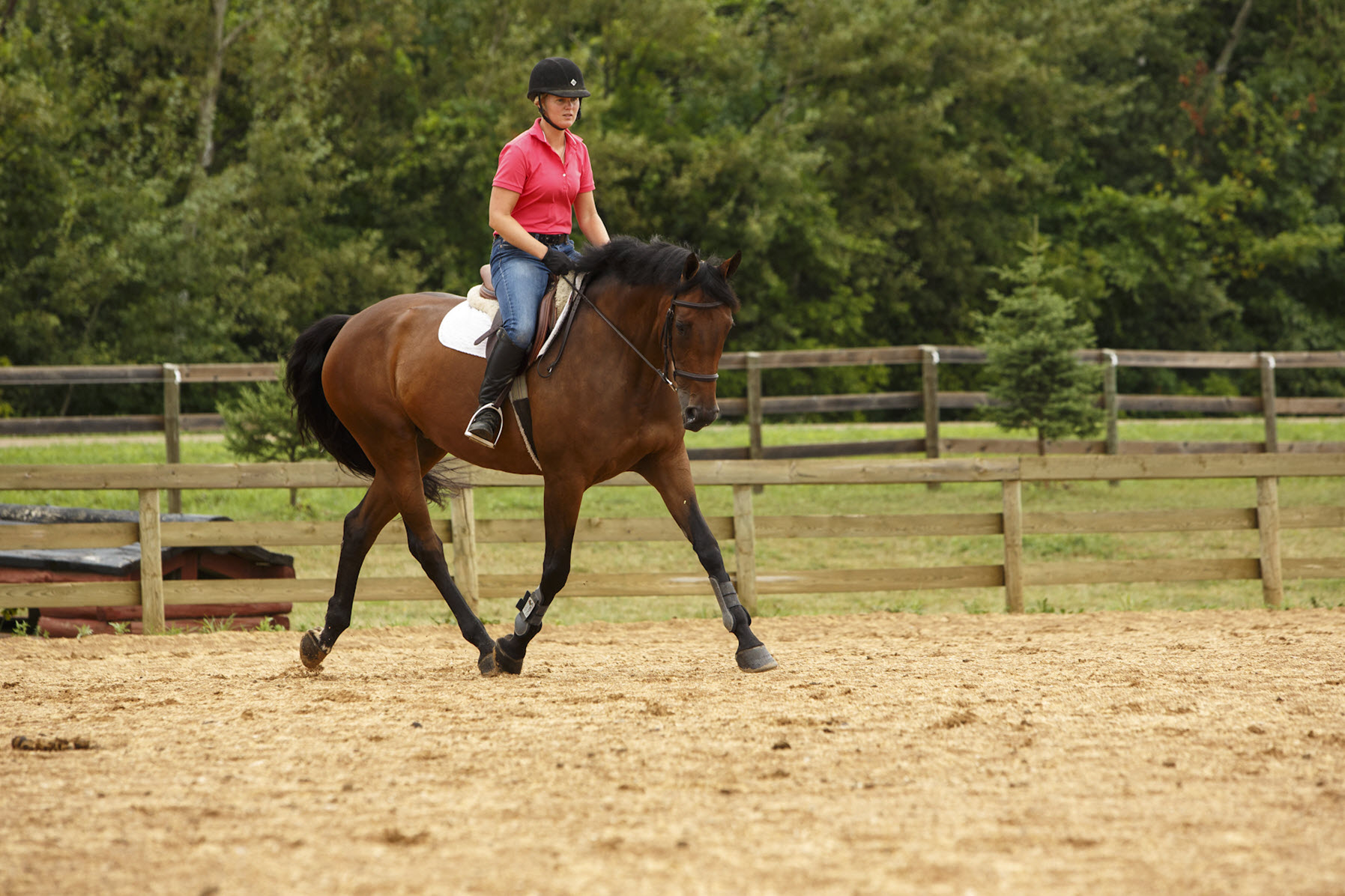Reconditioning After a Winter Break: Strategic Approach to Getting Back in the Saddle

If you live in a state that has cold winters, chances are that even if you have an indoor arena you are taking a break on those dreaded frigid dead-of-winter weeks or months. But when things begin to thaw and your horse begins to shed like crazy, it’s recondition after a winter break! If your horse has had more than three weeks off, he will need to be worked back into a routine strategically in order to help reduce the risk of over-stressing or injuring him in the process.
Starting with Low Impact Hacking and Walk Work
As eager as you are to get back to jumping, reining or piaff-ing, it’s best to start slow. Think of how you feel the first day back to the gym after a long break. Now picture yourself about 10x the size that you are now, in the gym, out of shape. It’s exhausting just thinking about it! Your horse might have built up energy and seem to be ready to get right to it, but it’s best to work him up slowly to help avoid an injury that could set you back even further.
Plan on a six to eight week conditioning schedule depending on how much time your horse has had off. Start with low impact hacking for about 15 minutes, working only at the walk. You could also utilize a hot walker if you have one available or hand-walk if you would like. Unless your horse is very obedient on the lunge line, it’s not a recommended way to get him into shape just in case he is extra excitable. Bolting away and galloping in a small circle on the lunge could result in injury to him or even you.
Gradually Introduce Trot and Canter Work
5-7 days after you begin your walking routine add in 5 minutes of trot work each day. After two weeks of solid walk-trot work you can gradually introduce the canter, again working up slowly from 5 minutes just as you did the trot.
Reintroducing Jumping and Increasing Complexity
After thirty days of flat work you can begin to add more strenuous activity to your conditioning program like jumping or speed work (barrels) but work up slowly. Figure in another month to get your horse back to where he was before he took the break. Begin with jumping a single, low fence both directions for the first week, then add in a line and work your way back to a full course. Once you are jumping a course at a smaller height, gradually increase the size of your fences and the complexity of the course.
Utilizing Flatwork and Personal Development
If you are worried that you or your horse might get bored working on the flat, remember that flatwork is the foundation for your riding no matter what discipline you ride. It’s a good time for you to work on yourself as well, starting you out on the right foot (or hoof) for the season. Work on your position or ride with no stirrups. When your horse is feeling more fit, do some lateral work and get him really listening to your aids so he’s sharp when the time comes to compete.
Adjusting Feeding Program While Reconditioning After a Winter Break
As far as feed is concerned, as you are reconditioning, the correct feeding program will depend on what your horse’s body condition score is coming out of his break. If he is on the thin side, you will want to increase his feeding rate as you work him harder or include a fat supplement. Make sure to always provide fresh, clean water and free choice hay. If he is on the heavier side of the scale, keep his feeding rate the same but keep an eye on that body condition score as you may need to adjust your feeding rate as he gets back into shape and is working harder.
Reconditioning your horse after a winter break requires a gradual and strategic approach. Starting with low impact work and gradually increasing the intensity will help reduce the risk of injury. Focus on flatwork and incorporate jumping exercises gradually. Monitor your horse’s body condition and adjust the feeding program accordingly. Remember to stay patient and consistent throughout the reconditioning process to ensure a successful return to riding.
